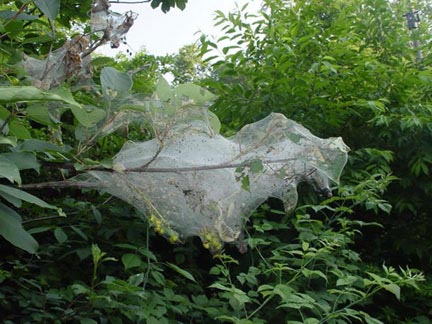All Maine Matters
Because All of Maine DOES Matter!
Vol. 1, No. 9 September 2006 FREE
The Fall Webworm (hyphantria cunea)
If you’ve done any driving around Maine this fall, you’ve seen them. And you’re right; there are many more of them than usual. The ugly, loosely constructed, silken nests (webs) that you’ve seen in trees and shrubs everywhere this year are produced by hairy caterpillars known as the fall webworm.
They have stripped parts, or even the whole of some trees of their leaves, detracting greatly from the attractiveness of a drive in the country; or from your lawn, if you’ve been cursed with them this year. A single nest or colony can consist of hundreds of writhing caterpillars, ravaging the leaves on your trees.
The fall webworm particularly enjoys apple, cherry, ash, willow, oak, birch, elm, and other deciduous species.
State officials insist that they are not considered a threat to hardwood forests, nor do they represent a significant threat to the health of infested trees as it occurs too late in the season after trees have already stored up much of their food reserves. If they should return to the same areas for a few consecutive years, damage could be done to the affected branches, however.
It is not recommended that you torch your tree in an effort to remove the pests, as this could be harmful to the tree. In small trees, the nests may be removed by hand, or cut out and destroyed. A forked stick or a stick with a nail in it may be inserted into larger webs and by twisting it the loose webs may be twisted off from the trees.
Thorough spraying with pesticides labeled for use against tent caterpillars, which include carbaryl, diazinon, or acephate as soon as the small webs and caterpillars are seen will arrest the growth of the caterpillars and their nests. Bacillus thuringiensis (Bt) a microbial product, is also registered for use against this pest. Apply the insecticide as directed on the container. However, the optimal timing for spraying would have been about mid-July.

